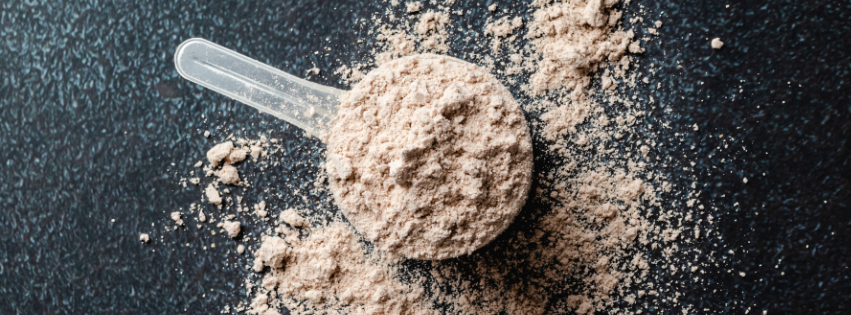
Are Heavy Metals Hiding in Your Protein Powder? Here’s What You Need to Know
BALA BITES: HEAVY METALS IN PROTEIN POWDER
I have to admit, this is a frustrating write-up to pen but it's an important one.
Choosing “healthy” can sometimes feel like navigating a minefield. No matter what your knowledge base is.
And I know this post won't make the "minefield" any easier to navigate.
So I will do my best to make this a productive read, that informs you as a consumer and empowers you to take action if needed...while hopefully worrying a little less.
THE CLP STUDY ON PROTEIN POWDERS
The Clean Label Project (CLP) just dropped an unsettling study on heavy metals in protein powder.
If you are a power user of protein powders, you can't afford to skip this.
The CLP study, released in January 2025, tested 160 protein powders from 70 of the top-selling brands—representing a massive 83% of the U.S. market.
CLP screened for 258 different contaminants, including:
- Heavy metals (lead, cadmium, arsenic, mercury)
- Chemicals like BPA, phthalates, and PFAS (aka "forever chemicals")
Here are their top findings:
- Nearly half (47%) of protein powders tested exceeded California’s Prop 65 safety thresholds for heavy metals—particularly lead and cadmium.
- Plant-based protein powders contained 3x more lead than whey-based options.
- Organic protein powders had 3x more lead and 2x more the cadmium compared to non-organic powders.
- Chocolate-flavored powders were especially high in heavy metals, with 4x more lead and up to 110x more cadmium than vanilla.

WHY THIS MATTERS
Protein is all the rage these days (and for good reason).
It seems like every product is releasing a "high in protein" version. To get higher protein levels, products rely on added protein powders or consumers use them to augment diet.
Relative to a decade ago, we are consuming far more protein powder.
Now we find out these protein powders could have unsafe heavy metal levels?
It's no joke. Lead has no safe level of exposure and cadmium can accumulate in the kidneys and bones.
Long-term exposure for both is bad news.
Consumers are now looking for clean protein powders that are third-party tested for purity and safety.
Protein powder safety will continue to be a priority for consumers.
SHOULD I PANIC?
Hang tight. While concerning, CLP's findings do come with some big caveats so don't skip on these.
- Dose and frequency matter. The occasional scoop won’t ruin you—but if you’re using protein powders daily, it’s worth paying attention.
- Context is key. The study used California’s Prop 65 standards, which are among the strictest in the world. While that’s great for safety, it also means that some of these thresholds may not align with broader scientific consensus.
- Lack of transparency. The CLP didn't share methodology, funding sources or comparative data. Without that, it’s hard to know how representative or biased the findings might be. Their study was not peer-reviewed, which is a gold-standard in terms of quality design.
WHAT TO DO
Feeling defeated? Same. But there are ways to navigate this:
✅ Buy products that use third-party testing. Certifications from USP, NSF, or ConsumerLab provide extra assurance (but beware—some brands say “third-party tested” without listing who did the testing).
✅ Diversify your protein sources. Protein powders are considered a supplement. They should supplement your diet, not dominate. Also default to natural, whole-food options.
✅ Moderation is key. If you use protein powder daily, consider cutting back or rotating between different brands and types.
BOTTOM LINE
Caveat emptor. Buyer Beware.
The CLP study raises valid concerns about heavy metal contamination in protein powders but due to a lack of transparency we should not take the findings as gospel
If protein powders are a staple in your diet, it’s worth choosing wisely and not overdoing it. Or buy from brands that rely on named 3rd party testing (one such brand is Momentous).
SUMMARY
- Nearly half (47%) of protein powders tested exceeded California’s Prop 65 safety thresholds for heavy metals, particularly lead and cadmium. Plant-based, organic, and chocolate-flavored powders showed the highest contamination levels.
- The findings are concerning but come with caveats: the study wasn’t peer-reviewed and lacked transparency on funding.
- Smart consumers should buy brands that use third-party testing (USP, NSF, ConsumerLab), default to whole food protein sources and use protein powders in moderation.
FURTHER READING
Want more insights like this? Sign up for Bala Bites and get a curated compilation of insights delivered every other week to your inbox
Wondering about creatine? We break it down for you and share why you should consider adding it to your supplement stack